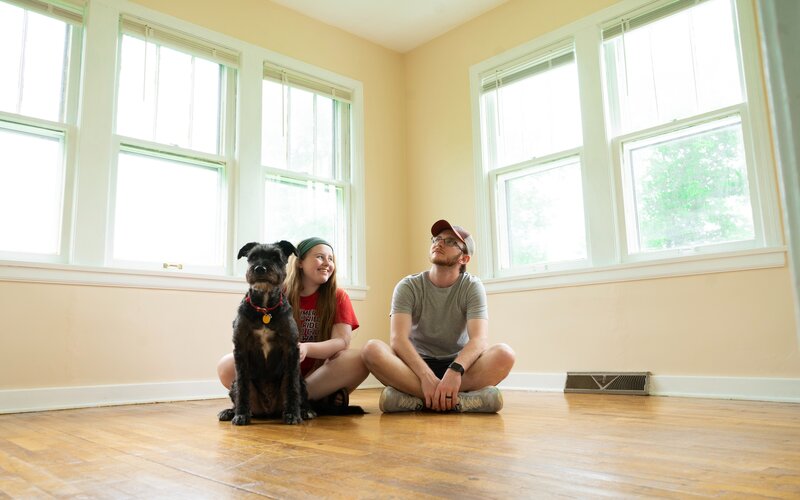Just having money in a savings account isn’t always enough when it comes to getting a home loan, because they might not be considered genuine.
What are genuine savings?
“Genuine savings” is a phrase used by lenders to describe savings that you yourself have saved over a period of time – usually between three to six months. It’s different to regular savings sitting in your bank account, which you may have earned by receiving a one-off bonus at work, selling a car, or being directly gifted some money from someone else.
There’s nothing wrong with having this money – the more you have of it the merrier – but these funds aren’t considered to be genuine savings, i.e. you didn’t save them yourself over time.
What is and isn’t considered genuine savings can be a bit tricky sometimes and will ultimately depend on the lender’s criteria, but genuine savings usually consist of any of the following:
- Savings held for three months or more
- Term deposits with terms lasting more than three months
- Funds salary sacrificed under the First Home Super Saver Scheme
- Shares or managed funds you’ve held for at least three months
- Equity in your current property
Genuine savings vs regular savings
So the difference between genuine savings and regular savings is that genuine savings don’t have to be savings in the traditional sense. It can be your money that you’ve stored elsewhere or use to invest with. And for these funds to count as ‘genuine savings’ they need to be maintained, so withdrawing a bulk sum from your savings account or closing your term deposit early might mean the lender won’t consider them as true genuine savings.
What aren’t genuine savings?
As we said before, just having some money in your account isn’t enough. That’s why the following things generally don’t count as genuine savings:
- Gifts or inheritances
- Asset sales (such as a car)
- Tax refunds
- Work bonuses
- The First Home Owners Grant
There are obviously exceptions to these rules depending on who you’re borrowing from. For example, you can have gifts or inheritances approved as genuine savings if you have a letter from the gift giver/executor in some situations.
Rent can also be used as genuine savings if you pay it on time every time for at least three-twelve months, as long as your name is both on the lease and on the home loan application.
Buying a home or looking to refinance? The table below features home loans with some of the lowest interest rates on the market for owner occupiers.
| Lender | Home Loan | Interest Rate | Comparison Rate* | Monthly Repayment | Repayment type | Rate Type | Offset | Redraw | Ongoing Fees | Upfront Fees | LVR | Lump Sum Repayment | Additional Repayments | Split Loan Option | Tags | Features | Link | Compare |
|---|---|---|---|---|---|---|---|---|---|---|---|---|---|---|---|---|---|---|
6.04% p.a. | 6.06% p.a. | $2,408 | Principal & Interest | Variable | $0 | $530 | 90% | Featured 4.6 Star Customer Ratings |
| |||||||||
5.99% p.a. | 5.90% p.a. | $2,396 | Principal & Interest | Variable | $0 | $0 | 80% | Featured Apply In Minutes |
| |||||||||
6.09% p.a. | 6.11% p.a. | $2,421 | Principal & Interest | Variable | $0 | $250 | 60% | Featured Unlimited Redraws |
|
How much saving is enough for a home loan?
How much genuine savings are required is often dependent on the deposit. The bigger the deposit the less genuine savings you need, if any at all:
- 80% LVR (20% deposit): genuine savings are not required
- 85-90% LVR (15-10% deposit): genuine savings may be required
- More than 90% LVR (Less than 10% deposit): you will likely require genuine savings
- 95% LVR (5% deposit): you’ll need to show genuine savings
- 100% LVR (No deposit): genuine savings aren’t required if you use a guarantor on your home loan
You’ll need to have saved at least 5% of the property’s purchase price as genuine savings when it’s required. For example, 5% genuine savings on a $500,000 property is $25,000. So in addition to the house deposit, which could be as much as $50,000, you’ll need to have held at least $25,000 worth of genuine savings and not have withdrawn from it to the point where it drops below this amount.
Example of what’s not genuine savings:
Say you want to purchase that same property worth $500,000, and the lender requires genuine savings of $25,000. Over six months you build your savings account from $15,000 to $30,000, but right before you apply for the loan you take $10,000 out to help finance a new car. That would leave your genuine savings at $20,000, which wouldn’t be enough to secure a loan.
An alternative would be to seek a higher deposit so genuine savings aren’t required, but this isn’t always possible.
Why do lenders look for genuine savings?
Serviceability is an important part of the lending process. Responsible lending practices mean lenders need to do their due diligence and make sure a person they’re giving a loan to has the capacity to repay it, whether those repayments are weekly, fortnightly or monthly. People who are borrowing more of the property’s value are generally deemed by the lender to be a higher-risk borrower – and why wouldn’t they? Someone who has saved up for a higher deposit has already proven themselves to be trustworthy.
So lenders will look to your bank accounts and scrutinise your spending, looking into:
- How much money you spend in any given week/month
- How this spend compares to your money in (income)
- How much debt you have
- The type of things you spend money on (heavy gambling and Afterpay use are often frowned upon by most lenders).
Having a savings buffer before taking out a loan will prove to them that you can be trusted with money, and therefore will boost your chances of approval.
How to build your genuine savings
Build your genuine savings fund the same way you would with regular savings:
- Automatically transfer a lump sum every payday
- Eliminate unnecessary transactions
- Get a high-interest savings account (or term deposit)
- Invest spare change and keep any bonuses you earn
- Track spending with apps
To make sure you don’t spend any of it and miss out on the genuine threshold, keep it in a separate, no-fee savings account that makes it hard to withdraw.
Other costs of getting a home loan
The way home loans are talked about online or in the news, you’d think the deposit was the only thing needed to get one. A 20% deposit on a median-priced house is already quite high at around $100,000 – but the reality is the deposit is just one component of a home loan’s upfront costs.
There are other fees like stamp duty, Lenders Mortgage Insurance, home loan application fees, transfer and registration fees, valuation fees, conveyancing fees and more. At least genuine savings don’t get taken away by the bank so you can use them after you’ve secured approval, but all these other fees and costs can add extra tens of thousands of dollars to a home loan.
Frequently asked questions
1. Does rent count as genuine savings?
Rent can also be used as genuine savings if you pay it on time every time for at least three-twelve months, as long as your name is both on the lease and on the home loan application. (this line is already in the article - just add the question above the sentence)
2. Can I get a home loan with no savings?
If you want to secure a home loan without a deposit, having a guarantor is really your only option. If you can't get a guarantor, the maximum amount you can borrow from most lenders is typically 95% of the property's value.
3. What is the best account to save for a house?
A high interest savings account or a term deposit could be good places to store your hard-earned savings for a house deposit.
4. How can I save a house deposit fast?
To fast track your house deposit savings, you may want to consider moving in with family or moving into a share house to save money on rent, and cut out non-essential spending. You could also consider investing some money in high-growth assets such as shares or ETFs, but keep in mind this could be a high-risk strategy since share markets can be very volatile in the short-term.
5. How do I save for a house if I live paycheck to paycheck?
If you live paycheck to paycheck, try taking a good hard look at what you're spending (you can use a spending tracker app for this), make a budget, eliminate debts, cut down on unnecessary expenses and invest that money into your savings account instead. Over time, you may be surprised by how much you could save. Also if you're a first home buyer, be aware of the state grants and special boosts you may be eligible for, such as the first homeowners grant, the first home loan deposit scheme, stamp duty waivers and the first home super saver scheme. All of these things can help you land that first property.
Savings.com.au’s two cents
If you’re applying for a home loan with a lower deposit, there’s a good chance you’ll need to show a short history of stringent savings habits worth up to 5% of the home’s value, although there are certain lenders out there who won’t need it.
But whether you need to show genuine savings or not is irrelevant, in our opinion. What reason do you have to not save? The more money you have stored away alongside your house deposit the better; you never know what might happen, and if you can’t afford to meet your repayments you’ll be in trouble. So build some ‘genuine’ savings regardless of whether you need it or not.
Photo by Caleb George on Unsplash

Ready, Set, Buy!
Learn everything you need to know about buying property – from choosing the right property and home loan, to the purchasing process, tips to save money and more!
With bonus Q&A sheet and Crossword!






 Emma Duffy
Emma Duffy
 Harrison Astbury
Harrison Astbury
 Rachel Horan
Rachel Horan
 Aaron Bell
Aaron Bell
 Denise Raward
Denise Raward

